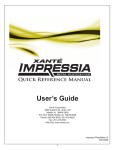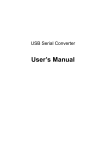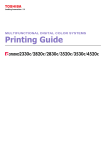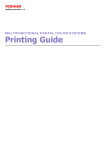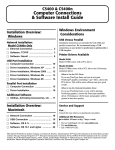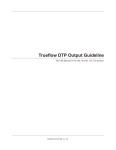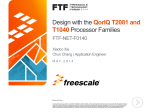Download Macintosh OS 10.3 Printer Driver
Transcript
Every effort has been made to ensure that the information in this document is complete, accurate, and up-to-date. The manufacturer assumes no responsibility for the results of errors beyond its control. The manufacturer also cannot guarantee that changes in software and equipment made by other manufacturers and referred to in this Guide will not affect the applicability of the information in it. Mention of software products manufactured by other companies does not necessarily constitute endorsement by the manufacturer. While all reasonable efforts have been made to make this document as accurate and helpful as possible, we make no warranty of any kind, expressed or implied, as to the accuracy or completeness of the information contained herein. © 2004, Oki Data, Inc. All rights reserved. As an ENERGY STAR® Program Participant, the manufacturer has determined that this product meets the ENERGY STAR guidelines for energy efficiency. OKI is a registered trademark of Oki Electric Industry Co., Ltd. Apple, LaserWriter, Macintosh and Mac OS are trademarks of Apple Computer, Inc., registered in the U.S. and other countries. Adobe, AdobePS and Photoshop are either trademarks or a registered trademarks of Adobe Systems Incorporated in the United States and/or other countries. Energy Star is a registered trademark of the United States Environmental Protection Agency. Freehand is a registered trademark of Macromedia. Hewlett-Packard, HP, and LaserJet are registered trademarks of Hewlett-Packard Company. Microsoft, MS-DOS and Windows are registered trademarks of Microsoft Corporation. Other product names and brand names are registered trademarks or trademarks of their proprietors. Executive Series 2426 Printer Family Technical Reference Macintosh P/N 59367001, Rev. 1.1 2 Contents Macintosh OS 9.x .................................................................................... 5 Printer Driver ................................................................................................... 5 Setting Up the Printer Driver ..................................................... 5 Operation ......................................................................................................... 7 Color Print Matching ................................................................. 8 Choosing a Color Matching Method ....................................... 11 Color Option ........................................................................... 13 Job Option ............................................................................ 19 Job Type Plug-in ...................................................................... 23 Printing Multiple Pages on One Sheet (N-up Printing) .......... 32 Duplex Printing (Printing on Both Sides of the Paper) .......... 33 Collating................................................................................... 35 Utilities............................................................................................................ 37 General Information................................................................. 37 Installing the Utilities............................................................... 38 Fonts Downloader.................................................................... 39 Color Swatch Utility ................................................................ 40 Storage Device Manager ......................................................... 42 Macintosh OS 10.1 & 10.2 .................................................................50 Printer Driver ................................................................................................ 50 Operation ...................................................................................................... 51 Color Print Matching ............................................................... 52 Choosing a Color Matching Method ....................................... 56 Driver Options ......................................................................... 58 Printing Multiple Pages on One Sheet (N-up Printing) ........... 68 Duplex Printing (Printing on Both Sides of the Paper) ........... 69 Collating................................................................................... 70 Utilities............................................................................................................ 71 Macintosh OS 10.3 ...............................................................................72 Printer Driver ................................................................................................ 72 Operation ...................................................................................................... 73 Color Print Matching ............................................................... 74 Choosing a Color Matching Method ....................................... 77 Driver Options ......................................................................... 79 Printing Multiple Pages on One Sheet (N-up Printing) ........... 88 Duplex Printing (Printing on Both Sides of the Paper) ........... 89 Collating................................................................................... 91 Utilities............................................................................................................ 92 Index .........................................................................................................93 3 Notes, Cautions, etc. NOTE A note appears in this manual like this. A note provides additional information to supplement the main text. CAUTION! A caution appears in this manual like this. A caution provides additional information which, if ignored, may result in equipment malfunction or damage. WARNING! A warning appears in this manual like this. A warning provides additional information which, if ignored, may result in a risk of personal injury. Important! An Important box appears in the manual like this. An important box provides information which can impact the usability of that particular printer function. 4 Macintosh OS 9.x Printer Driver This section describes how to change the PPD file and how to activate optional accessories in the printer driver, once you have installed them in the printer. See your printed Software Installation Guide for information on installing printer drivers. Setting Up the Printer Driver 1. From the Apple menu, select Chooser. 2. Double click LaserWriter8. 3. Select the name of the new icon which appeared after you installed the driver, then click Setup. Select the PPD 4. Click Select PPD. 5. Click Printing → Change Setup.... 6. Select your printer model from the list, then click Open. 5 Activate Installed Options in the Driver 7. Click Configure. Mac9.1 _Select Options .jpg 8. Optional Trays: To engage optional trays, change the setting for Available Tray to 2 or 3 depending on how many trays you have installed. 9. Duplex Unit: To engage the Duplex Unit, change the setting to Installed. 10. Hard Disk Drive: To engage the hard disk drive, change the setting to Installed. 11. DIMMs: To engage additional memory, set Memory Configuration to the new total value of memory installed (standard memory + any installed optional DIMM memory). 12. When done, click OK. 13. Click OK. 14. Close Chooser. 6 Macintosh OS 9.x Operation This section explains how to change the printer’s operation for specific print jobs directly from within an application. Most applications allow the printer properties to be accessed from within the document print dialog. This section will only detail options as they apply to the LaserWriter® 8 driver. Refer to manufacturer’s guidelines regarding other driver operations, for example the AdobePS™ driver. 7 Color Print Matching The install utility provides a color matching profile for your printer, as well as Color Option utility in the print driver. In general, using the Auto settings will provide reasonable default settings that produce good results for most documents. Many applications have their own color settings, and these may override the settings in the printer driver. Please refer to the documentation for your software application for details on how that particular program’s color management functions. If you wish to manually adjust the color settings in your printer driver, please be aware that color reproduction is a complex topic, and there are many factors to take into consideration. Some of the most important factors are listed below. Differences between the Range of Colors a Monitor or Printer Can Reproduce • Neither a printer nor a monitor is capable of reproducing the full range of colors visible to the human eye. Each device is restricted to a certain range of colors. In addition to this, a printer cannot reproduce all of the colors displayed on a monitor, and vice versa. • Both devices use very different technologies to represent color. A monitor uses Red, Green and Blue (RGB) phosphors (or LCDs), a printer uses Cyan, Magenta, Yellow and Black (CMYK) toner or ink. • A monitor can display very vivid colors such as intense reds and blues and these cannot be easily produced on any printer using toner or ink. Similarly, there are certain colors, (some yellows for example), that can be printed, but cannot be displayed accurately on a monitor. This disparity between monitors and printers is often the main reason that printed colors do not match the colors displayed on screen. 8 Viewing Conditions A document can look very different under various lighting conditions. For example, the colors may look different when viewed standing next to a sunlit window, compared to how they look under standard office fluorescent lighting. Printer Driver Color Settings The driver settings for Manual color can change the appearance of a document. There are several options available to help match the printed colors with those displayed on screen. These options are explained in subsequent sections of this User Manual. To access the color matching options in the driver discussed below: 1. Access the printer settings page via the Print dialog from any application (usually accessed via File → Print). 2. Click the General drop down menu and select Color Option. 9 Monitor Settings The brightness and contrast controls on your monitor can change how your document looks on-screen. Additionally, your monitor color temperature influences how “warm” or “cool” the colors look. NOTE Several of the Color Matching options make reference to your monitor’s Color Temperature. Many modern monitors allow the color temperature to be adjusted using the monitor’s control panel. There are several settings found on a typical monitor: • 5000k* Warmest; yellowish lighting, typically used in graphics arts environments. • 6500k Cooler; approximates daylight conditions. • 9300k Cool; the default setting for many monitors and television sets. *k = degrees Kelvin, a measurement of temperature How Your Software Application Displays Color Some graphics applications such as Macromedia Freehand® or Adobe® Photoshop® may display color differently from “office” applications such as Microsoft® Word. Please see your application’s online help or user manual for more information. Paper Type The type of paper used can also significantly affect the printed color. For example, a printout on recycled paper can look duller than one on specially formulated glossy paper. 10 Choosing a Color Matching Method There is no one way to achieve a good match between the document displayed on your monitor and its printed equivalent. There are many factors involved in achieving accurate and reproducible color. However, the following guidelines may help in achieving good color output from your printer. There are several suggested methods, depending on the type of document you are printing. NOTE These suggestions are for guidance only. Your results may vary depending on the application from which you are printing. Some applications will override any color matching settings in the printer driver without warning. RGB or CMYK? The guidelines for choosing a color matching method makes distinctions between Red, Green, Blue (RGB) and Cyan, Magenta, Yellow, Black (CMYK). Generally, most documents you print will be in RGB format. This is the most common, and, if you do not know your document’s color mode, assume that it is RGB. Typically CMYK documents are only supported in professional Desktop Publishing and Graphics applications. Matching Photographic Images RGB Only The standard Color Matching (found in the printer driver under Color Matching) is a generally a good choice. Select a matching method appropriate to your monitor. RGB or CMYK If you are printing photographic images from a graphics application such as Adobe Photoshop, you may be able to use Soft-Proofing to simulate the printed image on your monitor. To do this, you can use the ICC-Profiles provided, and then print using the ICC profiles as the Print Space (or Output space). 11 Matching Specific Colors (e.g., a company logo) RGB Only • Standard Color Matching, and the sRGB setting. • PostScript Color Matching using the Absolute Colorimetric option. • Use the Color Swatch Utility to print out a chart of RGB swatches and enter your desired RGB values in your application's color picker. RGB or CMYK • If you are printing from a graphics application such as Adobe Photoshop, you may be able to use Soft-Proofing to simulate the printed image on your monitor. To do this, you can use the ICC-Profiles provided, and then print using the ICC profiles as the Print Space (or Output space). • Alternatively, use PostScript Color Matching with the Absolute Colorimetric setting. Printing Vivid Colors RGB Only • Use Color Matching, with the Monitor 6500k Vivid, sRGB or Digital Camera settings. RGB or CMYK • Use PostScript Color Matching with the Saturation option. 12 Color Option Mac9.1_OKIColorOption.jpg 1. Open your printer driver (by choosing File → Print from an application) and select your printer. 2. Open the drop-down menu directly underneath the printer and select Color Option. ColorOptionSelecting_crop.jpg 13 Color Control Color Control allows you to determine the scheme in which the printer will display colors. Mac9.1_ColorControl_No_PANTONE.jpg Select from: a. OKI Color Matching This is OKI’s proprietary color matching system. It affects RGB data only. This is the default setting. This option provides the fastest, best color matching for your printer. b. PostScript Color Matching This uses PostScript Color Rendering Dictionaries built into the printer. It affects both RGB and CMYK data. c. No Color Matching No color correction occurs when selected. This option is beneficial when other matching regimens are used, specifically if you select a Color Simulation option. d. Print in Grayscale No color will print. The printer will interpret all colors as a variation of grays. 14 Color Setting This option allows you to select your color settings as they appear on your monitor. ColorSettingDialog.jpg Select the method you wish to use: Monitor(6500k) Auto The default setting that selects the best options for your printer. This selection works best for office situations. Monitor (6500k) Perceptual Optimized for printing photographs when using a monitor with a color temperature of 6500K. This is best for printing photographic images. Monitor (6500k) Vivid Optimized for printing bright colors when using a monitor with a color temperature of 6500K. Ideal for office graphics and text. Vivid or Digital Camera settings produce brightest colors. Monitor (9300k) Optimized for printing photographs when using a monitor with a color temperature of 9300K. Digital Camera Optimized for printing photographs taken with a digital camera. This tends to produce prints with lighter and brighter colors. For some photographs, other settings may be better depending on the subjects and the conditions under which they were taken. Vivid or Digital Camera settings produce brightest colors. 15 sRGB This option attempts to simulate RGB color. Optimized for matching specific colors, such as a company logo color. The colors within the printer's color gamut are printed without any modification, and only colors that fall outside the printable colors are modified. Rendering When a document is printed, a conversion takes place from the document's color space to the printer color space. The rendering intents are essentially a set of rules that determine how this color conversion takes place. RenderingDialog.jpg Select the desired option: Auto The best default. This selects the optimal settings for a general office environment. Perceptual Best choice for printing photographs. Compresses the source gamut into the printer's gamut while maintaining the overall appearance of an image. This may change the overall appearance of an image as all the colors are shifted together. Saturation Best choice for printing bright and saturated colors if you don't necessarily care how accurate the colors are. This makes it the recommended choice for graphs, charts, diagrams etc. Maps fully saturated colors in the source gamut to fully saturated colors in the printer's gamut. Relative Colorimetric Good for proofing CMYK color images on a desktop printer. Much like Absolute Colorimetric, except that it scales the source white to 16 the (usually) paper white; i.e. unlike Absolute Colorimetric, this attempts to take the paper white into account. Absolute Colorimetric Best for printing solid colors and tints, such as Company logos etc. Matches colors common to both devices exactly, and clips the out-of-gamut colors to their nearest printed equivalent. Tries to print white as it appears on screen. The white of a monitor is often very different from paper white, so this may result in color casts, especially in the lighter areas of an image. Color Simulation Affects CMYK output only and is usually used in offset printer environments only. ColorSimulation.jpg This option simulates what the output will look on a printing press using the ink types SWOP, Euroscale or Japan. If using CMYK Ink Simulation, it is recommended that you switch off all other Printer Color Matching by selecting No Color Matching under the Color Match option in the printer driver. Select the option desired. Black Finish This setting determines Black Toner usage only. BlackFinish.jpg Auto This option is best for an office environment, with the printer determining which style is better. Glossy This option uses more CMYK and less Black while producing a shinier black. 17 Matte This option uses more Black and less CMYK while producing a flatter black. Separations This option affects output only, allowing you to print all four colors as separate plates. Separations.jpg Black Overprint This option prevents registration errors and only works for 100% black text. Click the checkbox to enable the option. BlackOverprint.jpg Printer Halftone This option prevents the halftone of a high-end graphics application from printing. Click the checkbox to enable the option. Halftone.jpg Custom Gamma Adjustment Not available. 18 Job Option JobOption_oem.jpg To access Job Option: 1. Click File → Print, and select your printer. 2. Open the drop-down list directly below Printer: and select Job Option. JobOptionSelect.jpg 3. Make the desired selections. • Quality • Media Type • Miscellaneous Selections 19 Job Option Quality A straightforward selection of the print quality desired. • Fast: 600 x 600 dpi, both models • Fine Models ES2426n, ES2426dn: 600 x 1200 dpi Model ES2426e: 1200 x 1200 dpi Quality.jpg Media Type Many options are available for selecting the type of the print media. Normally the Printer Setting is sufficient. Select your desired Media Type. Mac9.1_MediaType.jpg NOTE Any selection, other than Printer Setting will override the printer’s Menu setting. 20 Job Option Miscellaneous Selections JobOptions.jpg Collate Collating can be carried out with or without a hard disk drive installed. However, printers with a hard disk drive will provide greater performance. This option is useful when printing multiple copies of large documents and wish for them to be printed in sequence. Click to enable collation of your documents. 1pg 2pg jpg Media Check Sets whether the printer checks the matching of paper size to that of the tray. Only standard sizes are checked. MP tray is handled as manual feed Selecting this will cause the MP tray to be used in manual feed situations. The MP tray cannot be used for duplex printing. 21 Page Rotate Checking this will rotate the printed material on the page 180 degrees. Apg Apg.jpg Toner Saving Checking this will enable toner saving. 22 Job Type Plug-in This plug-in allows you to utilize features through the printer’s optional hard disk drive. NOTE • The internal hard disk must be installed in the printer and enabled to allow for spooling of the print job before final printing. • If the hard disk memory is insufficient for the spooled data, DISK FULL is displayed and only one copy printed. • If the software application being used has a collate print option, this must be turned OFF for secure printing to operate correctly. • Secure printing may not be available in some software applications. To access Job Type, 1. Select your printer. 2. Open the drop-down menu directly underneath the printer and select Job Type. JobTypeAccessing.jpg Each feature on the Job Type screen is detailed below. 23 Job Type Features Print Type JobTypeFixed_oem.jpg From here you select the type of printing you wish to use. Normal The default setting. Job Spool Lets you spool your print job to the printer’s hard drive. Secure (see page 25) Allows you to print confidential documents on network printers by storing them on the printer’s hard drive, then going to the printer and using the control panel to print out the document. Proof and Print (see page 27) Allows printing of a single copy of a document for checking before printing multiple copies of the same document. Store to HDD (see page 29) Allows print jobs to be stored on the hard disk for future printings. 24 Job Type Features Print Type Secure Print Allows you to print confidential documents on network printers by storing them on the printer’s hard drive, then going to the printer and using the control panel to print out the document. NOTES • The internal hard disk must be installed in the printer and enabled, to allow for spooling of the print job before final printing. • If the hard disk memory is insufficient for the spooled data, DISK FULL is displayed and only one copy is printed. To send a confidential document to the printer using Secure Print: 1. Select the Secure option. 2. Enter a job name of up to 16 characters next to Job Name and a four digit personal ID number from 0000 to 9999 in the ID Number box. 3. Press Print to proceed with your print job. The document will be stored on the printer’s hard disk. 4. Walk up to the printer to print out the document using the front panel (see below). To print a confidential document MENU 0 ITEM VALUE SELECT 1 2 ON LINE 4 3 CANCEL 5 6 7 PrinterMenu.eps 1. Press the MENU button to access the PRINT JOBS MENU and press the SELECT button. 25 2. Use the numbered buttons on the control panel to enter the personal ID number you set above. 3. Press the VALUE button until ALL JOBS or the required job name is displayed. 4. Press the SELECT button. The document will print and be deleted from the hard disk drive. To delete a confidential document before printing it: 1. Press the MENU button to access the PRINT JOBS MENU and press the SELECT button. 2. Use the numbered buttons on the control panel to enter the personal ID number you set above. 3. Press the VALUE button until ALL JOBS or the required job name is displayed. 4. Press the CANCEL button to delete the job from the printer. 26 Proof and Print NOTES • The internal hard disk must be installed in the printer and enabled, to allow for spooling of the print job before final printing. • If the hard disk memory is insufficient for the spooled data, DISK FULL is displayed and only one copy is printed. • If the software application being used has a collate print option, it must be turned OFF for proof and print to operate correctly. • Proof and print may not be available in some software applications. Using Proof and Print 1. Select Proof and Print. 2. Enter a job name of up to 16 characters under Job Name Setting and a four digit personal ID number from 0000 to 9999. 3. Click Print to proceed with your print job. Print the document from the software application being used. The document will be stored on the printer’s hard disk and one copy will print for your perusal. 4. After checking the proof, you then can print or delete (if incorrect) the remaining copies of the document using the procedures given below. Printing the copies of a Proof and Print document 1. Press the MENU button to access the PRINT JOBS MENU, then press the SELECT button. 2. Use the numbered buttons on the control panel to enter the personal ID number you set above. 3. Press the VALUE button until ALL JOBS or the required job name is displayed. 4. Press the SELECT button to print the remaining copies of the document. 27 Deleting a Proof and Print document before printing the copies If the proof is not ready for printing, the job must be deleted from the printer: 1. Press the MENU button to access the PRINT JOBS MENU and press the SELECT button. 2. Use the numbered buttons on the control panel to enter the personal ID number you set above. 3. Press the VALUE button until ALL JOBS or the required job name is displayed. 4. Press the CANCEL button to delete the remaining copies of the document. 5. When the deletion confirmation message appears, confirm by pressing the SELECT button. 28 Store To Hard Disk NOTES • The internal hard disk must be installed in the printer and enabled to allow for spooling of the print job before final printing. • If the hard disk memory is insufficient for the spooled data, DISK FULL is displayed and only one copy printed. • If the software application being used has a collate print option, this must be turned OFF for store to hard disk to operate correctly. • Store to hard disk may not be available in some software applications. Using Store to Hard Disk 1. Select Store to HDD. 2. Enter a job name of up to 16 characters under Job Name and a four digit personal ID number from 0000 to 9999. 3. Click Print to proceed with your print job. The document will be stored on the printer’s hard disk. 4. The document can then be printed or deleted using the procedures given below. 29 Printing a document stored on the hard disk. MENU 0 ITEM VALUE SELECT 1 2 ON LINE 4 3 CANCEL 5 6 7 PrinterMenu.eps 1. Press the MENU button to access the PRINT JOBS MENU and press the SELECT button. 2. Use the numbered buttons on the control panel to enter the personal ID number you set above. 3. Press the VALUE button until ALL JOBS or the required job name is displayed. 4. Press the SELECT button to print the document. Deleting a stored document from the hard disk drive 1. Press the MENU button to access the PRINT JOBS MENU and press the SELECT button. 2. Use the numbered buttons on the control panel to enter the personal ID number you set above. 3. Press the VALUE button until ALL JOBS or the required job name is displayed. 4. Press the CANCEL button to delete the remaining copies of the document. 5. When the deletion confirmation message appears, confirm by pressing the SELECT button. 30 Run Maintenance Cycle Before Printing JobTypeFixed_oem.jpg Selecting Run Maintenance Cycle Before Printing forces the printer to automatically clean itself before printing. This option allows you to improve your print quality if there is a problem with printing such as too much graininess. 31 Printing Multiple Pages on One Sheet (N-up Printing) 1. Click File → Print, and select your printer. 2. Open the drop-down menu directly underneath the printer and select Layout. Layout_crop.jpg 3. From the Layout screen, select the options desired. a Layout Options _oem.jp g b c a. Set the number of pages to be printed. b. Select the desired orientation (portrait or landscape). c. Select a border between the sheets, if desired. 4. Click Print to print or Save Settings to save and close the printer dialog box. 32 Duplex Printing (Printing on Both Sides of the Paper) NOTE The duplex unit is optional for model ES2426n and must be installed in the printer and enabled before duplex printing can be carried out. • Standard paper sizes only. • Paper weight range 20 to 28 lb. US Bond (75 to 105 g/m²). • Paper must be loaded print side up. • Only Tray 1, optional Trays 2 and 3, and the High Capacity Feeder trays can be used for duplex printing. The MP tray cannot be used for duplex printing. 1. Click File → Print, and select your printer. 2. Open the drop-down menu directly underneath the printer and select Layout. Layout.jpg 33 3. From the Layout screen, select the options desired. a b LayoutOptions_oem.jpg a. Select Print on Both Sides. b. Select which Binding you prefer. 4. Click Print to print or Save Settings to save and close the printer dialog box. 34 Collating Collating can be carried out with or without a hard disk drive installed. However, printers with a hard disk drive will provide greater performance. Important If your software application has a collate option, use it instead of the collate option in the printer driver. Doing so will prevent any conflicts in printing, i.e. collate from the software application or collate from the printer driver. 1. Click File → Print, and select your printer. 2. The General dialog box should already be displayed. If not, then select General from the menu. GeneralSelect.jpg 35 3. Select Collated. General_oem.jpg 4. Click Print. 36 Mac OS 9.x Utilities General Information Important! These Utilities are unavailable for Mac OS 10.x. The following utilities are supplied: • Fonts Downloader (see page 39) This utility allows you to transfer fonts to the printer’s RAM or optional hard disk and to manage fonts on your PostScript printer. This utility is an Adobe product and is not supported by Oki Data. Please see the Read Me file for further information. • Color Swatch Utility (see page 40) The Color Swatch Utility allows you to print color samples or swatches on your color printer. The swatches are used with your software program to select and reproduce color accurately. The swatches represent selected samples of the your printer's color palette and can be used to find the desired colors for your printed documents. • Storage Device Manager (see page 42) Using the software improves the internal performance of the printer allowing you to adjust printer options. Important! The printer’s internal hard drive does not communicate directly back to the Storage Device Manager software; it sends any error messages to the printer display. If things seems to be “stuck,” check the display of the printer. 37 Installing the Utilities 1. 2. 3. 4. Insert the CD supplied with your printer into the CD-ROM drive. Double-click the CD icon that appears on the desktop. Open the MAC folder. Click PSDRV → English, then double click the Mac Installer icon. MacInstallerIcon.jpg 5. Click Continue and accept the Software License Agreement. 6. Select Custom Install to access the Utility Installation. InstallSelect_oem.jpg 7. Click the boxes beside the Utilities you wish to install, then click Install. The Utilities install into the folder you specify during the installation process. 38 Fonts Downloader This utility allows you to transfer fonts to the printer’s RAM or hard disk and to manage fonts on your PostScript printer. This utility is an Adobe product and is not supported by Oki Data. Please see the Read Me file for further information. Important! This utility only communicates with the printer via AppleTalk and is incompatible with USB connections. 39 Color Swatch Utility Things To Remember: • Your software may not be able to match colors using the information provided by the swatch files. In that case, you may need to use other means of matching. • Many other factors influence how you see color: the color and finish of the paper, the light you are using, even the colors surrounding the one you are identifying. • The swatches represent selected samples of your printer’s color palette and can be used to find the desired colors for your printed documents. Open Color Swatch Double click the local hard drive icon, then double click Oki Data → Swatch Utility → Swatch Utility. InstallSelect_oem.jpg Each color block, or sample, is identified with information your software package needs to reproduce that color accurately. The numbers under each block specify the amounts of the primary colors—red (R), green (G), and blue (B), that mix to form each particular shade. The amounts are given as a numerical value between 0 and 255. 40 Create a Custom Swatch 1. If the color you are seeking is not in the Simple Swatch, create a new color by selecting Custom Swatch from the File menu. CustomSwatch.jpg 2. Drag the handles as required and press OK to create the new color. • Hue bar changes the hue of the swatches, for example, red to green or blue to yellow. • Saturation bar changes vividness. • Lightness bar changes light intensity. 3. The utility then creates many different possibilities from which you can choose. 4. Once satisfied, print the swatch from the menu using File → Print or repeat the steps to find the color desired. NOTE • Swatch utility does not guarantee that the printer will print the same color as displayed; consider this only as a reference from which you can adjust parameters. • The printer may not be able to print the exact color that you desire. • For additional information, including Applying Color Value in your Application, and Setting Monitor Color, see the Swatch Utility ReadMe file located in the Mac folder. 41 Storage Device Manager Important! • When attempting to open the application, ensure that the default printer is connected and turned on. • If your default printer is a virtual printer, the application will return the error message “This utility does not support this interface.” Reset your default printer to a real printer. Open SDM Double click the local hard drive, then double click Okidata → SDM for Mac → Storage Device Manager for Mac. From the main screen, you can set the default feed tray as well as paper sizes for the feed trays. You can also enable (the default) or disable the Auto Tray Switch feature. Mac9 1 SDMforMac jpg NOTE Trays that are not installed are grayed out and disabled. 42 Using Storage Device Manager to set Options Click the Options button and make any desired changes in the settings. When you are done making changes, click Save to download the settings to the printer. Mac9.1_S DMOption s.jpg Manual Timeout When manual feed is selected and the printer detects that there is no paper in the requested feed tray, it will show a message requesting that paper be loaded and wait a period of time for the paper to be loaded before cancelling the print job. This sets the period of time the printer will wait. Mac9.1_SDMManualTimeout.jpg Printing Timeout When printing a job and the paper in the selected tray runs out, the printer will wait a period of time for more paper to be loaded before cancelling the print job. This sets the period of time the printer will wait. Mac9.1_SDMPrintTimeout.jpg Media Check Sets whether the printer checks the matching of paper size to that of the tray. Only standard sizes are checked. This should be disabled when printing transparencies or labels. It can also be disabled in the driver as a job is being printed. 43 Paper Jam Recovery This parameter, when enabled, sets whether or not printing continues after a paper jam has been cleared. If set to Disable, the print job that was being printed when the paper jam occurred will be cancelled after clearing the paper jam. When set to Enable, the print job will continue after the jam has been cleared. Power Save This will enable Power Save Delay. Power Save Delay When no input is received for the specified time, the printer will enter Power Save Mode. Mac9.1_SDMPowerDelay.jpg SDM Menu Items File Menu Mac9.1_SDMFileMenuy.jpg Refresh Downloads the latest settings from the printer. Update PPD Loads the latest PPD file. 44 Utilities Menu Mac9.1_SDMUtil Menu.jpg Change Printer Name/Zone Only available if the printer is on an AppleTalk network. Mac9 1 SDMPrinterName jpg This changes the name that is stored in the PostScript interpreter in the printer. However, this will not change the name displayed in the Chooser. 1. Click Utilities → Change Printer Name/Zone. 2. If available, choose the Zone required. 3. Rename the printer with the desired name and press Save. 45 Download File Mac9.1_SDMDownloadFile.jpg This utility allows you to download PS/PDF/Font files to the printer’s hard drive for faster printing. The printer will automatically print the PS/PDF files unless they are specified to be stored on the hard disk. 1. Click Utilities → Download File. 2. Select the file you wish to download to the printer. 3. Click Open to start the download process. Display Font List Shows a list of fonts currently loaded in the printer. DisplayFontList.jpg 46 Initialise Disk InitialiseDisk.jpg CAUTION! This utility erases the printer’s hard disk and causes it to rebuild the directories. This action cannot be undone. 1. Click Utilities → Initialise Disk. 2. Select the Disk to erase and click Initialise. Substitute Fonts This function is not supported for a non-kanji printer. 47 PS Gamma Adjuster Mac9.1_SDMGamma.jpg This option allows adjusting the gamma output, or toner density, when printing a job. The Gamma Curve profile is sent to the printer with the print job. 1. Because Gamma Curve profiles are tied to the displayed PPD file, select the correct PPD file before proceeding. 2. To add an available Gamma Curve profile, highlight the desired profile and press the Add button. 3. To remove a Gamma Curve profile from the PPD column, press the Delete button, not the Remove button. Only use the Remove button if you edit (using the Edit button) the profile and wish to store it in the Available Gamma Curves column. 48 Create/Edit a New Gamma Curve Profile 1. To create a new Gamma Curve, click New. To edit an existing Gamma Curve, highlight the profile and click Edit. GammaCurve.jpg 2. To apply the curve to all four colors, select All (CMYK) [the default]. To edit a specific color, deselect All (CMYK) and click the individual color. 3. To modify a gamma curve, click a point on the curve and drag it to change the shape of the curve. Or if known, enter the values in the fields at the bottom of the screen. 4. Once the configuration is complete, fill in a name and click Save. Important! Remember, the Gamma Curve profile is tied to the displayed PPD file; so the PPD file must be selected in the printer setup to gain access to the Gamma Curve profile saved to the same PPD file. 49 Macintosh OS 10.1 & 10.2 Printer Driver See your printed Software Installation Guide for information on installing printer drivers. Adjusting Options Apple Computer has not enabled Configure Printer... for OS 10.1 and 10.2. Therefore, direct configuration of the printer driver is unavailable at this time. ConfigurePrinter.jpg 50 Macintosh OS 10.1 & 10.2 Operation This section explains how to change the printer’s operation for specific print jobs. Most applications allow the printer properties to be accessed from within the document print dialog. This section will only detail options as they apply to the Executive Series 2426 printer driver. 51 Color Print Matching The install utility provides a color matching profile for your printer. In general, using the OKI Color Matching settings will provide reasonable default settings that produce good results for most documents. Many applications have their own color settings and these may override the settings in the printer driver. Please refer to the documentation for your software application for details on how that particular program’s color management functions. Factors That Affect the Appearance of Printed Documents If you wish to manually adjust the color settings in your printer driver, please be aware that color reproduction is a complex topic, and there are many factors to take into consideration. Some of the most important factors are listed below. Differences between the Range of Colors a Monitor or Printer Can Reproduce • Neither a printer nor a monitor is capable of reproducing the full range of colors visible to the human eye. Each device is restricted to a certain range of colors. Additionally, a printer cannot reproduce all of the colors displayed on a monitor and vice versa. • Both devices use very different technologies to represent color. A monitor uses Red, Green and Blue (RGB) phosphors (or LCDs), a printer uses Cyan, Yellow, Magenta and Black (CMYK) toner or ink. • A monitor can display very vivid colors such as intense reds and blues and these cannot be easily produced on any printer using toner or ink. Similarly, there are certain colors, (some yellows, for example), that can be printed, but cannot be displayed accurately on a monitor. This disparity between monitors and printers is often the main reason that printed colors do not match the colors displayed on screen. Viewing Conditions A print can look very different under different lighting conditions. For example, the colors in a print may look different when viewed standing next to a sunlit window, compared to how they look under standard office fluorescent lighting. 52 Monitor Color Profile Select Apple provides a ColorSync Utility → Devices that allows selection of the Oki Data supplied ICC color profile for your monitor. The profile will attempt to calibrate the monitor to more closely match the printer’s output. However, merely selecting the profile will not automatically produce perfect results as many factors will contribute to the gamut of color selection. 1. Navigate to the utility by double clicking your local hard drive, then double clicking Applications → Utilities → ColorSync Utility. 2. Click the arrow next to Displays and select your monitor (in this example it is iMac). For Current Profile, select Other... ColorSyncDeviceProfile.jpg 3. From the Profile selection menu, click the desired Oki Data ICC Profile, then press Open to enable it. 53 Color Profile Select: Apple ColorSync Not to be confused with the ColorSync Utility → Devices, Apple also provides a System Preference utility, ColorSync, for selection of color profiles for the printer and documents. 1. Click System Preferences → ColorSync. 2. On the Device Profiles tab, select your Oki Data Output profile. 3. On the Document Profiles tab, for the CMYK Default option, highlight the Oki Data profile desired. Printer Driver Color Settings The driver settings for Manual color can change the appearance of a printed document. There are several options available to help match the printed colors with those displayed on screen. These options are explained in subsequent sections. To access the color matching options in the driver discussed below: 1. Access the printer settings page via the Print dialog from any application (usually File → Print). 2. Click the drop down menu and select Printer Features and then select the Feature Set 2 tab for Color Control. 54 Monitor Settings The brightness and contrast controls on your monitor can change how your document looks on-screen. You can calibrate your monitor’s color regimen in System Preferences → Displays → Color. Additionally, your monitor color temperature influences how “warm” or “cool” the colors look. NOTE Several of the Color Matching options make reference to your monitor’s Color Temperature. Many modern monitors allow the color temperature to be adjusted using the monitor’s control panel. There are several settings found on a typical monitor: • 5000k* or D50 Warmest; yellowish lighting, typically used in graphics arts environments. • 6500k* or D65 Cooler; approximates daylight conditions. • 9300k*: Cool; the default setting for many monitors and television sets. (*k = degrees Kelvin, a measurement of temperature) How Your Software Application Displays Color Some graphics applications such as Macromedia Freehand or Adobe Photoshop may display color differently from “office” applications such as Microsoft Word. Please see your application’s online help or user manual for more information. Paper Type The type of paper used can also significantly affect the printed color. For example, a printout on recycled paper can look duller than one on specially formulated glossy paper. 55 Choosing a Color Matching Method There is no one correct way to achieve a good color match between the document displayed on your monitor, and its printed equivalent. There are many factors involved in achieving accurate and reproducible color. However, the following guidelines may help in achieving good color output from your printer. There are several suggested methods, depending on the type of document you are printing. NOTE These suggestions are for guidance only. Your results may vary depending on the application from which you are printing. Some applications will override any color matching settings in the printer driver without warning. RGB or CMYK? The guidelines for choosing a color matching method make distinctions between Red, Green, Blue (RGB) and Cyan, Magenta, Yellow, Black (CMYK). Generally, most office documents you print will be in RGB format. This is the most common, and, if you do not know your document’s color mode, assume that it is RGB. Typically CMYK documents are only used in professional Desktop Publishing and Graphics applications. 56 Matching Photographic Images RGB Only The standard Color Matching (found in the printer driver under Printer Features → Feature Set 2) is a generally a good choice. Select a matching method appropriate to your monitor. RGB or CMYK If you are printing photographic images from a graphics application such as Adobe Photoshop, you may be able to use Soft-Proofing to simulate the printed image on your monitor. To do this, you can use the ICC profiles provided by Oki Data, and then print using the ICC profiles as the Print Space (or Output space). Matching Specific Colors (For instance, a company logo.) RGB Only • OKI Color Matching, and the sRGB setting. • PostScript Color Matching using the Absolute Colorimetric option. RGB or CMYK • If you are printing from a graphics application such as Adobe Photoshop, you may be able to use Soft-Proofing to simulate the printed image on your monitor. To do this, you can use the ICC profiles provided and then print using the ICC profiles as the Print Space (or Output space). • Alternatively, use PostScript Color Matching with the Absolute Colorimetric setting. 57 Printing Vivid Colors RGB Only • Use OKI Color Matching, with either the Monitor 6500k Vivid, sRGB or Digital Camera settings. RGB or CMYK • Use PostScript Color Matching with the Saturation option. Driver Options OKI Printer Features To access Features: 1. Click File → Print and select your printer. 2. Open the drop-down menu and select Printer Features. SelectPrinterFeatures.pdf 58 Feature Set 1 Mac10.2_FeatureSet1.jpg Select from the following options: Quality • Fast: 600 x 600 dpi, both models • Fine: Models ES2426n, ES2426dn: 600 x 1200 dpi Model ES2426e: 1200 x 1200 dpi Collate 1pg_2pg.jpg Collating can be carried out with or without a hard disk drive installed. However, printers with a hard disk drive will provide 59 greater performance. This option is useful when printing multiple copies of large documents and you want to print them in sequence. NOTE If your software application has a collate option, use it instead of the collate option in the printer driver. Media Type Many options are available for selecting the media type. Normally the Printer Setting is used. MediaTypeOSX.jpg Any selection, other than Printer Setting, will override the printer’s menu setting. MP tray is handled as manual feed Select the option desired: the default is No. The MP tray cannot be used for duplex printing. Black Overprint This option prevents registration errors and only works for 100% black text. Click the checkbox to enable the option. 60 Feature Set 2 Mac10.2_FeatureSet2.jpg Select from the following options: Color Control Mac10.2AND3_ColorControl_No _PANTONE.jpg OKI Color Matching Affects RGB data only. This is the default setting and provides the fastest, best color matching for your printer. Postscript Color Matching Uses PostScript Color Rendering Dictionaries built into the printer, and affects both RGB and CMYK data. 61 No Color Matching No color correction occurs when selected. This option is beneficial when other matching regimens are used, specifically if you select a Color Simulation option. Print In Grayscale No color will print. The printer will interpret all colors as a variation of grays. Black Finish This setting determines Black Toner usage only. BlackFinishOSX.jpg Auto This option is best for an office environment, with the printer determining which style is better. Glossy This option uses more CMYK and less black while producing a shinier black. Matte This option uses more black and less CMYK while producing a flatter black. Color Setting This option allows you to select your color settings as they appear on your monitor. ColorSetting.jpg 62 Monitor(6500k) Auto The default setting that selects the best options for your printer. This selection works best for office situations. Monitor (6500k) Perceptual Optimized for printing photographs when using a monitor with a color temperature of 6500K, This is best for printing photographic images. Monitor (6500k) Vivid Optimized for printing bright colors when using a monitor with a color temperature of 6500K. Ideal for office graphics and text. Vivid or Digital Camera settings produce brightest colors. Monitor (9300k) Optimized for printing photographs when using a monitor with a color temperature of 6500K. Digital Camera Optimized for printing photographs taken with a digital camera. This tends to produce prints with lighter and brighter colors. For some photographs, other settings may be better depending on the subjects and the conditions under which they were taken. Vivid or Digital Camera settings produce brightest colors. sRGB Optimized for matching specific colors, such as a company logo color. This option attempts to simulate RGB color. The colors within the printer's color gamut are printed without any modification, and only colors that fall outside the printable colors are modified. 63 Rendering Intent When a document is printed, a conversion takes place from the document's color space to the printer color space. The rendering intents are essentially a set of rules that determine how this color conversion takes place. RenderingIntent.jpg Auto The best default select as this selects the optimal settings for a general office environment. Perceptual Best choice for printing photographs. Compresses the source gamut into the printer's gamut whilst maintaining the overall appearance of an image. This may change the overall appearance of an image as all the colors are shifted together. Saturation Best choice for printing bright and saturated colors if you don't necessarily care how accurate the colors are. This makes it the recommended choice for graphs, charts, diagrams, etc. Maps fully saturated colors in the source gamut to fully saturated colors in the printer's gamut. Relative Colorimetric Good for proofing CMYK color images on a desktop printer. Much like Absolute Colorimetric, except that it scales the source white to the (usually) paper white; i.e. unlike Absolute Colorimetric, this attempts to take the paper white into account. Absolute Colorimetric Best for printing solid colors and tints, such as company logos etc. Matches colors common to both devices exactly, and clips the out of gamut colors to their nearest printed equivalent. Tries to print white as it appears on screen. The white of a monitor is often very 64 different from paper white, so this may result in color casts, especially in the lighter areas of an image. Printer Halftone This option prevents the halftone of a high-end graphic application from printing. Click the checkbox to enable the option. PrinterHalftone.jpg Feature Set 3 Mac10.2_FeatureSet3.jpg Select from the following options: Color Simulation Affects CMYK output only and is usually used in offset printer environments only. ColorSimulationOSX.jpg This option simulates what the output will look on a printing press using the ink types SWOP, Euroscale or Japan. If using CMYK Ink Simulation, it is recommended that you switch off all other Printer 65 Color Matching by selecting the No Color Matching option under the Color Match option in the printer driver. Separations This option affects output only, allowing you to print all colors or separate plates. SeparationsOSX.jpg NOTE You must select a non-generic PostScript Printer Description (PPD) file for a printer that supports color separations. Media Check MediaCheckTonerSavePageRotate.jpg Sets whether the printer checks the matching of paper size to that of the tray. Only standard sizes are checked. Toner Saving Checking this will enable toner saving but reduce print quality. 66 Page Rotate Checking this will rotate the printed material on the page 180 degrees. Apg_Apg. jpg 67 Printing Multiple Pages on One Sheet (N-up Printing) 1. Click File → Print and select your printer. 2. Open the drop-down menu and select Layout. Mac10.2_SelectLayout.jpg 3. From the Layout screen, select the options desired. a b c LayoutMultiplePages.jpg a. For Multiple Pages, access Pages per sheet b. Select the desired Layout Direction. c. Select a Border between the sheets, if desired. 68 Duplex Printing (Printing on Both Sides of the Paper) 1. Click File → Print and select your printer. 2. Open the drop-down menu at left and select Duplex. Mac10.2_SelectDuplex.jpg 3. From the Duplex screen, select the options desired. Duplex.jpg a. For Duplexing (printing on both sides of the sheet), select Print on Both Sides. b. Select which Binding you prefer. Normally, the first option is the default. NOTES • Duplex printing can only be carried out on standard paper sizes and paper weights between 20 and 28 lb. (75 and 105 g/m²). • The duplex unit is optional for model ES2426n and must be installed in the printer and enabled before duplex printing can be carried out. • Paper must be loaded into the paper tray with the print side facing upwards. The multi purpose tray cannot be used for duplex printing. 69 Collating Collating can be carried out with or without the optional hard disk drive. However, using the HDD improves performance. If the software application being used has a collate print option, it is recommended to use only one collate option to prevent any conflicts in printing, i.e. collate from the software application or collate from the printer driver. 1. Click File → Print and select your printer. 2. The Copies & Pages dialog box should display. If not, select Copies & Pages from the menu. 3. Select Collated. CopiesandPagesOptions.jpg 4. Click Print. 70 Mac OS 10.1 & 10.2 Utilities With the exception of Job Accounting, the utilities on the Drivers CD are unavailable for Mac OS X and will only run on Mac 9.x or Classic OS. Once the Job Accounting utility has been set up by your Network Administrator, it is transparent to the operation of the printer driver on your OS X system. For more information on Job Accounting, see the “User’s Guide, Windows” on the Manuals CD supplied with your printer. 71 Macintosh OS 10.3 Printer Driver See your printed Software Installation Guide for information on installing printer drivers. Adjusting Options Apple Computer has not enabled Configure Printer... for OS 10.3. Therefore, direct configuration of the printer driver is unavailable at this time. ConfigurePrinter.jpg 72 Macintosh OS 10.3 Operation This section explains how to change the printer’s operation for specific print jobs. Most applications allow the printer properties to be accessed from within the document print dialog. This section will only detail options as they apply to the Executive Series 2426 printer driver. 73 Color Print Matching The install utility provides a color matching profile for your printer. In general, using the OKI Color Matching settings will provide reasonable default settings that produce good results for most documents. Many applications have their own color settings and these may override the settings in the printer driver. Please refer to the documentation for your software application for details on how that particular program’s color management functions. Factors That Affect the Appearance of Printed Documents If you wish to manually adjust the color settings in your printer driver, please be aware that color reproduction is a complex topic, and there are many factors to take into consideration. Some of the most important factors are listed below. Differences between the Range of Colors a Monitor or Printer Can Reproduce • Neither a printer nor a monitor is capable of reproducing the full range of colors visible to the human eye. Each device is restricted to a certain range of colors. Additionally, a printer cannot reproduce all of the colors displayed on a monitor and vice versa. • Both devices use very different technologies to represent color. A monitor uses Red, Green and Blue (RGB) phosphors (or LCDs), a printer uses Cyan, Yellow, Magenta and Black (CMYK) toner or ink. • A monitor can display very vivid colors such as intense reds and blues and these cannot be easily produced on any printer using toner or ink. Similarly, there are certain colors, (some yellows, for example), that can be printed, but cannot be displayed accurately on a monitor. This disparity between monitors and printers is often the main reason that printed colors do not match the colors displayed on screen. Viewing Conditions A print can look very different under different lighting conditions. For example, the colors in a print may look different when viewed standing next to a sunlit window, compared to how they look under standard office fluorescent lighting. 74 Monitor Color Profile Select Apple provides a ColorSync Utility → Devices that allows selection of the Oki Data supplied ICC color profile for your monitor. The profile will attempt to calibrate the monitor to more closely match the printer’s output. However, merely selecting the profile will not automatically produce perfect results as many factors will contribute to the gamut of color selection. 1. Navigate to the utility by double clicking your local hard disk, then double clicking Applications → Utilities → ColorSync Utility → Devices. 2. Click the arrow next to Displays and select your monitor (in this example it is iMac). For Current Profile, select Other... ColorSyncDeviceProfile.jpg 3. From the Profile selection menu, click the desired Oki Data ICC Profile, then click Open to enable it. Printer Driver Color Settings The driver settings for Manual color can change the appearance of a printed document. There are several options available to help match the printed colors with those displayed on screen. These options are explained in subsequent sections. 75 To access the color matching options in the driver discussed below: 1. Access the printer settings page via the Print dialog from any application (usually File → Print). 2. Click the drop-down menu and select Printer Features and then select the Feature Set 2 tab for Color Setting. Monitor Settings The brightness and contrast controls on your monitor can change how your document looks on-screen. You can calibrate your monitor’s color regimen in System Preferences → Displays → Color. Additionally, your monitor color temperature influences how “warm” or “cool” the colors look. NOTE Several of the Color Matching options make reference to your monitor’s Color Temperature. Many modern monitors allow the color temperature to be adjusted using the monitor’s control panel. There are several settings found on a typical monitor: • 5000k* or D50 Warmest; yellowish lighting, typically used in graphics arts environments. • 6500k* or D65 Cooler; approximates daylight conditions. • 9300k*: Cool; the default setting for many monitors and television sets. (*k = degrees Kelvin, a measurement of temperature) How Your Software Application Displays Color Some graphics applications such as Macromedia Freehand or Adobe Photoshop may display color differently from “office” applications such as Microsoft Word. Please see your application’s online help or user manual for more information. 76 Paper Type The type of paper used can also significantly affect the printed color. For example, a printout on recycled paper can look duller than one on specially formulated glossy paper. Choosing a Color Matching Method There is no one correct way to achieve a good color match between the document displayed on your monitor, and its printed equivalent. There are many factors involved in achieving accurate and reproducible color. However, the following guidelines may help in achieving good color output from your printer. There are several suggested methods, depending on the type of document you are printing. NOTE These suggestions are for guidance only. Your results may vary depending on the application from which you are printing. Some applications will override any color matching settings in the printer driver without warning. RGB or CMYK? The guidelines for choosing a color matching method make distinctions between Red, Green, Blue (RGB) and Cyan, Magenta, Yellow, Black (CMYK). Generally, most office documents you print will be in RGB format. This is the most common, and, if you do not know your document’s color mode, assume that it is RGB. Typically CMYK documents are only used in professional Desktop Publishing and Graphics applications. 77 Matching Photographic Images RGB Only The standard Color Matching (found in the printer driver under Printer Features → Feature Set 2) is generally a good choice. Select a matching method appropriate to your monitor. RGB or CMYK If you are printing photographic images from a graphics application such as Adobe Photoshop, you may be able to use Soft-Proofing to simulate the printed image on your monitor. To do this, you can use the ICC-Profiles provided, and then print using the ICC profiles as the Print Space (or Output space). Matching Specific Colors (For instance, a company logo.) RGB Only • OKI Color Matching, and the sRGB setting. • PostScript Color Matching using the Absolute Colorimetric option. RGB or CMYK • If you are printing from a graphics application such as Adobe Photoshop, you may be able to use Soft-Proofing to simulate the printed image on your monitor. To do this, you can use the ICC-Profiles provided and then print using the ICC profiles as the Print Space (or Output space). • Alternatively, use PostScript Color Matching with the Absolute Colorimetric setting. Printing Vivid Colors RGB Only • Use OKI Color Matching, with either the Monitor 6500k Vivid, sRGB or Digital Camera settings. RGB or CMYK • Use PostScript Color Matching with the Saturation option. 78 Driver Options OKI Printer Features To access Feature Set 1: 1. Click File → Print and select your printer. 2. Open the drop-down menu and select Printer Features. Mac10.3_SelectPrinterFeatures.jpg 79 Feature Set 1 Mac10.3_FeatureSet1.jpg Select from the following options: Quality • Fast: 600 x 600 dpi, both models • Fine: Models ES2426n, ES2426dn: 600 x 1200 dpi Model ES2426e: 1200 x 1200 dpi Collate 1pg_2pg.jpg Collating can be carried out with or without a hard disk drive installed. However, printers with a hard disk drive provide greater 80 performance. This option is useful when printing multiple copies of large documents and you want to print them in sequence. NOTE If your software application has a collate option, use it instead of the collate option in the printer driver. Media Type Many options are available for selecting the media type. Normally the Printer Setting is used. Mac10.3_MediaType.jpg Any selection, other than Printer Setting, will override the printer’s menu setting. MP tray is handled as manual feed MPTrayandBlackOverprint.jpg Select the option desired: the default is No. The MP tray cannot be used for duplex printing. Black Overprint This option prevents registration errors and only works for 100% black text. Click the checkbox to enable the option. 81 Color Control Mac10.2AND3_ColorControl_No _PANTONE.jpg OKI Color Matching Affects RGB data only. This is the default setting and provides the fastest, best color matching for your printer. Postscript Color Matching Uses PostScript Color Rendering Dictionaries built into the printer, and affects both RGB and CMYK data. No Color Matching No color correction occurs when selected. This option is beneficial when other matching regimens are used, specifically if you select a Color Simulation option. Print In Grayscale No color will print. The printer will interpret all colors as a variation of grays. 82 Feature Set 2 Mac10.3_FeatureSet2.jpg Select from the following options: Black Finish This setting determines Black Toner usage only. BlackFinishOSX.jpg Auto This option is best for an office environment, with the printer determining which style is better. Glossy This option uses more CMYK and less black while producing a shinier black. Matte This option uses more black and less CMYK while producing a flatter black. 83 Color Setting This option allows you to select your color settings as they appear on your monitor. ColorSetting.jpg Monitor(6500k) Auto The default setting that selects the best options for your printer. This selection works best for office situations. Monitor (6500k) Perceptual Optimized for printing photographs when using a monitor with a color temperature of 6500K, This is best for printing photographic images. Monitor (6500k) Vivid Optimized for printing bright colors when using a monitor with a color temperature of 6500K. Ideal for office graphics and text. Vivid or Digital Camera settings produce brightest colors. Monitor (9300k) Optimized for printing photographs when using a monitor with a color temperature of 6500K. Digital Camera Optimized for printing photographs taken with a digital camera. This tends to produce prints with lighter and brighter colors. For some photographs, other settings may be better depending on the subjects and the conditions under which they were taken. Vivid or Digital Camera settings produce brightest colors. sRGB Optimized for matching specific colors, such as a company logo color. This option attempts to simulate RGB color. The colors within the printer's color gamut are printed without any modification, and only colors that fall outside the printable colors are modified. 84 Rendering Intent When a document is printed, a conversion takes place from the document's color space to the printer color space. The rendering intents are essentially a set of rules that determine how this color conversion takes place. RenderingIntent.jpg Auto The best default select as this selects the optimal settings for a general office environment. Perceptual Best choice for printing photographs. Compresses the source gamut into the printer's gamut whilst maintaining the overall appearance of an image. This may change the overall appearance of an image as all the colors are shifted together. Saturation Best choice for printing bright and saturated colors if you don't necessarily care how accurate the colors are. This makes it the recommended choice for graphs, charts, diagrams, etc. Maps fully saturated colors in the source gamut to fully saturated colors in the printer's gamut. Relative Colorimetric Good for proofing CMYK color images on a desktop printer. Much like Absolute Colorimetric, except that it scales the source white to the (usually) paper white; i.e. unlike Absolute Colorimetric, this attempts to take the paper white into account. Absolute Colorimetric Best for printing solid colors and tints, such as company logos etc. Matches colors common to both devices exactly, and clips the out of gamut colors to their nearest printed equivalent. Tries to print white as it appears on screen. The white of a monitor is often very different from paper white, so this may result in color casts, especially in the lighter areas of an image. 85 Printer Halftone This option prevents the halftone of a high-end graphic application from printing. Click the checkbox to enable the option. PrinterHalftone.jpg Color Simulation Affects CMYK output only and is usually used in offset printer environments only. ColorSimulationOSX.jpg This option simulates what the output will look on a printing press using the ink types SWOP, Euroscale or Japan. If using CMYK Ink Simulation, it is recommended that you switch off all other Printer Color Matching by selecting the No Color Matching option under the Color Match option in the printer driver. Separations This option affects output only, allowing you to print all colors or separate plates. SeparationsOSX.jpg NOTE You must select a non-generic PostScript Printer Description (PPD) file for a printer that supports color separations. 86 Feature Set 3 M 10 3 F t S t3 j Select from the following options: Media Check Sets whether the printer checks the matching of paper size to that of the tray. Only standard sizes are checked. Toner Saving Checking this enables toner saving but reduce print quality. Page Rotate Checking this rotates the printed material on the page 180 degrees. Apg_Apg.jpg 87 Printing Multiple Pages on One Sheet (N-up Printing) 1. Click File → Print and select your printer. 2. Open the drop-down menu and select Layout. Mac10.3_SelectLayout.jpg 3. From the Layout screen, select the options desired. a b c Mac10.3_Layout.jpg a. For Multiple Pages, access Pages per sheet b. Select the desired Layout Direction. c. Select a Border between the sheets, if desired. 88 Duplex Printing (Printing on Both Sides of the Paper) 1. Click File → Print and select your printer. 2. Open the drop-down menu and select Layout. Mac10.3_SelectLayout.jpg 3. Under Two Sided Printing, select the binding. Mac10.3_DuplexOff.jpg 89 Long Edge Binding Mac10.3_LongEdge.jpg Short Edge Binding Mac10.3_ShortEdge.jpg NOTES • Duplex printing can only be carried out on standard paper sizes and paper weights between 20 and 28 lb. (75 and 105 g/m²). • The duplex unit is optional for model ES2426n and must be installed in the printer and enabled before duplex printing can be carried out. • Paper must be loaded into the paper tray with the print side facing upwards. The multi purpose tray cannot be used for duplex printing. 90 Collating Collating can be carried out with or without the optional hard disk drive. However, using the HDD improves performance. If the software application being used has a collate print option, it is recommended to use only one collate option to prevent any conflicts in printing, i.e. collate from the software application or collate from the printer driver. 1. Click File → Print and select your printer. 2. The Copies & Pages dialog box should display. If not, select Copies & Pages from the menu. 3. Select Collated. Mac10.3_CopiesandPages.jpg 4. Click Print. 91 Mac OS 10.3 Utilities With the exception of Job Accounting, the utilities on the Drivers CD are unavailable for Mac OS 10.3 and will only run on Mac 9.x or Classic OS. Once the Job Accounting utility has been set up by your Network Administrator, it is transparent to the operation of the printer driver on your OS 10.3 system. For more information on Job Accounting, see the “User’s Guide, Windows” on the Manuals CD supplied with your printer. 92 Index B Black finish OS 10.1/10.2 . . . . . . . . . . . OS 10.3 . . . . . . . . . . . . . . . OS 9.x . . . . . . . . . . . . . . . . Black overprint OS 10.1/10.2 . . . . . . . . . . . OS 10.3 . . . . . . . . . . . . . . . OS 9.x . . . . . . . . . . . . . . . . D Duplex printing OS 10.1/10.2 . . . . . . . . . . . 69 OS 10.3 . . . . . . . . . . . . . . . 89 OS 9.x. . . . . . . . . . . . . . . . . 33 62 83 17 F 60 81 18 Fonts downloader utility . . . . . 39 G C Gamma curve adjuster. . . . . . 48 Collating . . . . . . . . . . . . . . . . 70 OS 10.1/10.2 . . . . . . . . . . . 70 OS 10.3 . . . . . . . . . . . . . . . 91 OS 9.x . . . . . . . . . . . . . . . . 35 Color control OS 10./10.2. . . . . . . . . . 61 OS 10.3. . . . . . . . . . . . . 82 OS 9.x. . . . . . . . . . . . . . 14 matching methods OS 10.1/10.2. . . . . . . . . 56 OS 10.3. . . . . . . . . . . . . 77 OS 9.x. . . . . . . . . . . . . . 11 option settings . . . . . . . . . . 13 print matching OS 10.1/10.2. . . . . . . . . 52 OS 10.3. . . . . . . . . . . . . 74 OS 9.x. . . . . . . . . . . . . . . 8 setting OS 10.1/10.2. . . . . . . . . 62 OS 10.3. . . . . . . . . . . . . 84 OS 9.x. . . . . . . . . . . . . . 15 simulation OS 10.1/10.2. . . . . . . . . 65 OS 10.3. . . . . . . . . . . . . 86 OS 9.x. . . . . . . . . . . . . . 17 swatch utility . . . . . . . . . . . 40 M Mac OS 10.1/10.2 choosing color matching methods. . . . . . . . . . . . . . . 56 collating . . . . . . . . . . . . . . . 70 color print matching . . . . . . 52 duplex printing . . . . . . . . . . 69 n-up printing . . . . . . . . . . . . 68 operation. . . . . . . . . . . . . . . 51 setting printer features . . . . 58 Mac OS 10.3 choosing color matching methods. . . . . . . . . . . . . . . 77 collating . . . . . . . . . . . . . . . 91 color print matching . . . . . . 74 duplex printing . . . . . . . . . . 89 n-up printing . . . . . . . . . . . . 88 operation. . . . . . . . . . . . . . . 73 setting printer features . . . . 79 93 PostScript color matching OS 10.1/10.2 . . . . . . . . . . . 61 OS 10.3 . . . . . . . . . . . . . . . 82 OS 9.x. . . . . . . . . . . . . . . . . 14 Print quality OS 10.1/10.2 . . . . . . . . . . . 59 OS 10.3 . . . . . . . . . . . . . . . 80 OS 9.x. . . . . . . . . . . . . . . . . 20 Printer drivers Mac OS 10.3. . . . . . . . . . . . 72 OS 10.1/10.2 . . . . . . . . . . . 50 OS 9.x. . . . . . . . . . . . . . . . . . 5 Proof and print, OS 9.x . . . . . 27 PS Gamma Adjuster . . . . . . . 48 Mac OS 9.x activating duplex unit. . . . . . 6 activating hard disk drive. . . 6 activating optional memory . 6 activating trays . . . . . . . . . . 6 choosing color matching methods . . . . . . . . . . . . . . 11 color option settings . . . . . 13 color print matching. . . . . . . 8 job option. . . . . . . . . . . . . . 19 job type . . . . . . . . . . . . . . . 23 operation . . . . . . . . . . . . . . . 7 selecting PPD . . . . . . . . . . . 5 utilities color swatch utility. . . . . 40 fonts downloader . . . . . 39 installing . . . . . . . . . . . . 38 storage device manager 42 Maintenance cycle, OS 9.x. . 31 Media check OS 10.1/10.2 . . . . . . . . . . . 66 OS 10.3 . . . . . . . . . . . . . . . 87 OS 9.x . . . . . . . . . . . . . 21, 43 R Rendering intents OS 10.1/10.2 . . . . . . . . . . . 64 OS 10.3 . . . . . . . . . . . . . . . 85 OS 9.x. . . . . . . . . . . . . . . . . 16 S N-up printing OS 10.1/10.2 . . . . . . . . . . . 68 OS 10.3 . . . . . . . . . . . . . . . 88 OS 9.x . . . . . . . . . . . . . . . . 32 Secure print, OS 9.x. . . . . . . . 25 Separations OS 10.1/10.2 . . . . . . . . . . . 66 OS 10.3 . . . . . . . . . . . . . . . 86 OS 9.x. . . . . . . . . . . . . . . . . 18 Storage device manager . . . . 42 Store to hard disk, OS 9.x . . . 29 P U Page rotate OS 10.1/10.2 . . . . . . . . . . . 67 OS 10.3 . . . . . . . . . . . . . . . 87 OS 9.x . . . . . . . . . . . . . . . . 22 Utilities, OS 9.x . . . . . . . . . . . 37 color swatch . . . . . . . . . . . . 40 fonts downloader . . . . . . . . 39 storage device manager . . . 42 N 94






























































































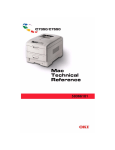

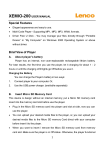
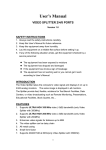
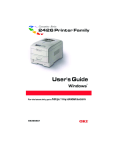

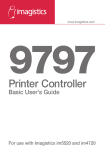

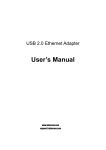

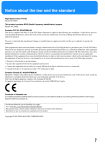
![4 Click [OK] - Toshiba America Business Solutions](http://vs1.manualzilla.com/store/data/005818130_1-6da0751aebf4d6c87686321c2c4e7e3a-150x150.png)
